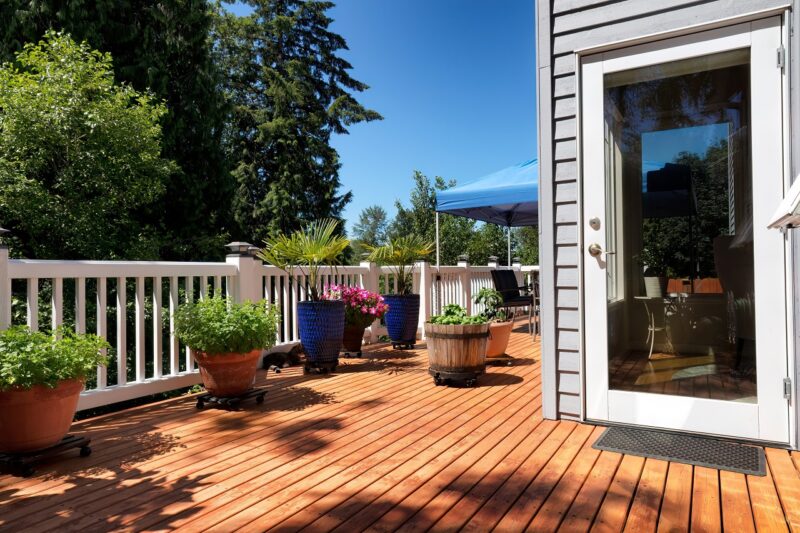Published: 24/12/24 By: Mike Bekin
If you are considering adding decking to your outdoor space, you have a lot of material options from which to choose. Two of the most popular for commercial and public areas, in particular, are timber and aluminium. But could you really get the same standard as timber decking from metal? Let’s take a look.
Comparing Timber and Aluminium
To understand whether aluminium can work in place of timber for your decking, let’s review some key features side by side:
Aesthetic Appeal
In most settings, timber decking wins on aesthetic appeal. While aluminium can be manufactured to mimic the timber colouring and grain, it is not a great fake and looks flat and dull when compared to the real thing. However, when it is not attempting to copy the look of timber, aluminium does bring a contemporary, professional style to commercial spaces, though it can appear less welcoming.
Durability and Strength
Both timber and aluminium perform well in terms of durability and strength. With timber you do have to make sure you choose the right species, but with the help of professionals that is an easy task. We recommend durability class 3, 2, or 1 timbers, including Balau, Ekki, Ipe and Jatoba.
Maintenance
Even the most durable and strong timber species will need maintenance over time. This does not mean you will be oiling and staining your decking every year, but it is smart to carry out maintenance every few years or whenever your decking looks in need of a little TLC.
While aluminium will not need maintenance, it is harder to fix when your boards begin looking worse for wear. A scratch or dent, for example, could mean the whole board needs to be replaced, making it harder to keep your decking flawless over the years.
Versatility and Ease of Installation
Both timber decking and aluminium decking can be made to order, ensuring you can fit your boards within your space. However, once your boards have arrived, aluminium will be a lot harder to work with and adjust. After all, you cannot simply take a saw to an incorrectly measured metal board!
Timber decking boards, on the other hand, are much easier to alter, giving you the freedom and flexibility to work with the space you have.
Affordability
Timber decking tends to have a smaller upfront cost than aluminium, making it the budget-friendly option. You will need to factor in the cost of maintenance, including buying stains and preservative treatments, but choosing a durable species can greatly reduce these expenses.
Looking at Sustainability
At EcoChoice, we are always thinking about sustainability. So it is only right that we want to take a quick look at the environmental impact of timber decking vs aluminium decking.
There is no doubt that timber is the more eco-friendly choice. For every dry tonne of timber produced, a whopping 1.8 tonnes of CO₂ is absorbed into the wood and sequestered, meaning that it is stored safely within your decking rather than being released into the atmosphere. It is also a natural, renewable and biodegradable material, giving it an eco-friendly five stars from our team!
Aluminium is not quite so green. The aluminium industry generates a massive 1.1 billion tonnes of CO₂ every year, with no carbon sequestration in sight.
Find Sustainable Timber at EcoChoice
Whether you are thinking of aesthetics, flexibility or sustainability, timber decking wins every time. Just make sure you opt for a durable species which is suitable for exterior use, and you are good to go!
Not sure where to start? We can help. Get in touch with the EcoChoice team to find your ideal sustainable timber species.
Tags: aluminium decking, timber decking
Categories: Insights
